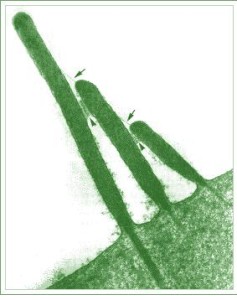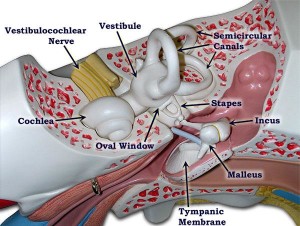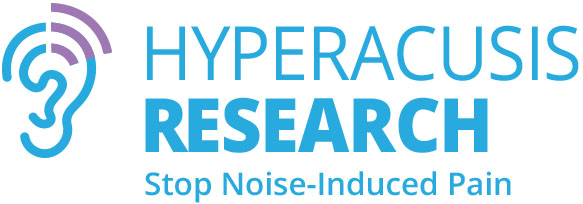Learn About the Ear
 There is still significant research designed to get more understanding of the normal functioning ear. This page is devoted to a few of the better mechanisms and models from basic ear research.
There is still significant research designed to get more understanding of the normal functioning ear. This page is devoted to a few of the better mechanisms and models from basic ear research.
F. Mammano and R. Nobili have one of the best on-line model descriptions of the functional components of the inner ear. This site includes many animated parts which enable excellent visualization of the models especially under the Theory section and there are good reference listings to support the concepts. The page on hair cells shows the conection between the electrical energy and mechanical movement. Of special interest for future hyperacusis research is the assessment of impact to the hair cell receptor potential (a time dependent modulation of their membrane potential) and possibly the endolymph which is a potassium-rich extracellular fluid whose standing potential is about 80 mV more positive than perilymph,
The University of Wisconsin has a good on-line textbook model. In the Middle Ear section, the reflex contractions of the middle ear muscles are discussed: “The tensor tympani and stapedius tensor muscles in the middle ear contract reflexly in response to loud sounds. Both muscles increase the stiffness of the ossicular chain when they contract and thus reduce sound transmission by up to 15 dB, depending on frequency.” For acoustic trauma induced hyperacusis, it would to helpful to conclusively discern if this function has been compromised.
 Another excellent textbook ear mechanism description is at cochlea.org. In the Neurosensory Pathology section the site refers to one possible mechanism of tinnitus: “A major factor in cochlear neurone pathology is glutamate excitotoxicity. This occurs in two main situations: local ischaemia and acoustic trauma. Excitotoxicity is also involved in the loss of neurones in ageing (neural presbycusis). Before neurones are actually lost, the first step of excitotoxicity may alter the auditory nerve activity and be the starting point of peripheral tinnitus.” Analyzing these same mechanisms in relationship to hyperacusis may prove beneficial.
Another excellent textbook ear mechanism description is at cochlea.org. In the Neurosensory Pathology section the site refers to one possible mechanism of tinnitus: “A major factor in cochlear neurone pathology is glutamate excitotoxicity. This occurs in two main situations: local ischaemia and acoustic trauma. Excitotoxicity is also involved in the loss of neurones in ageing (neural presbycusis). Before neurones are actually lost, the first step of excitotoxicity may alter the auditory nerve activity and be the starting point of peripheral tinnitus.” Analyzing these same mechanisms in relationship to hyperacusis may prove beneficial.
